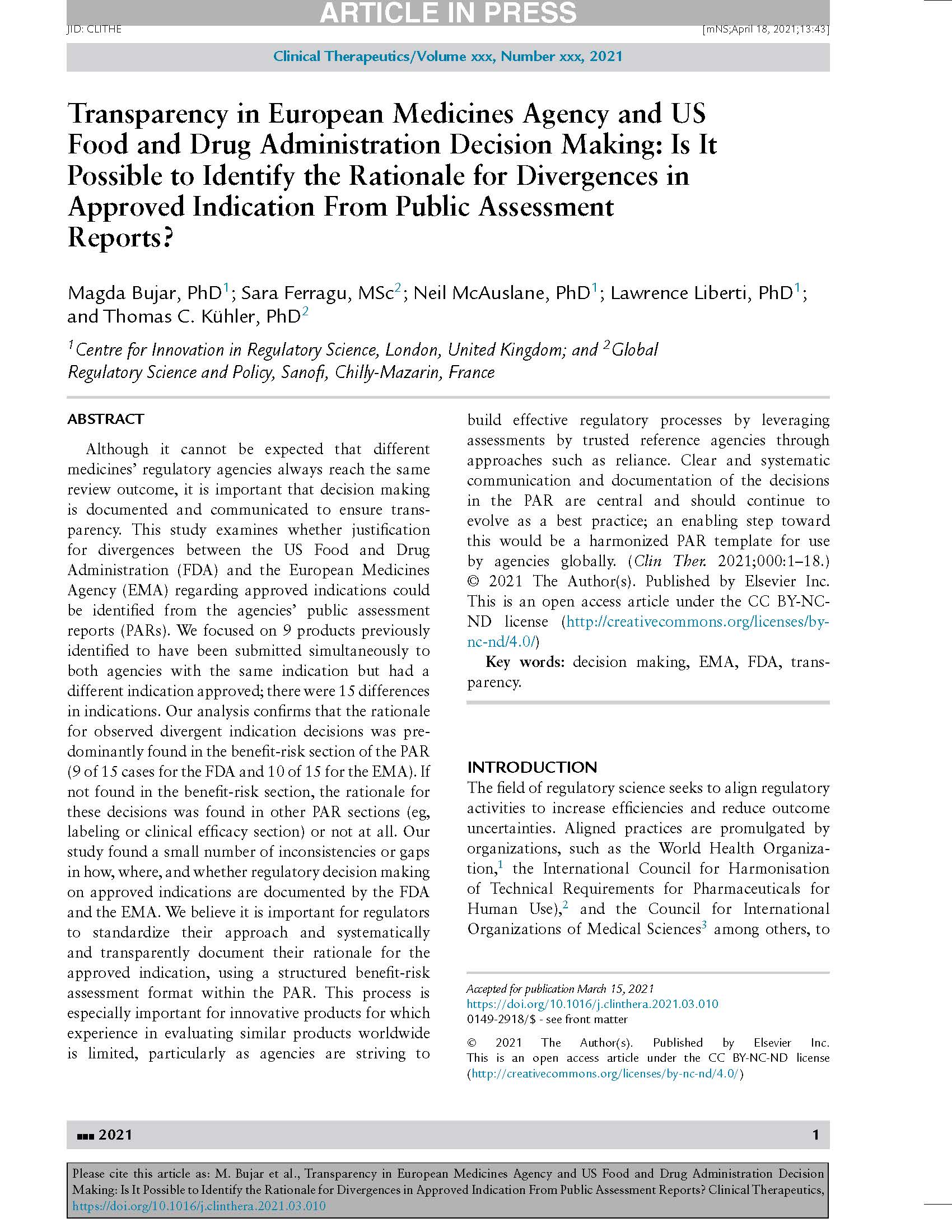Although it cannot be expected that different medicines’ regulatory agencies always reach the same review outcome, it is important that decision making is documented and communicated to ensure transparency. This study examines whether justification for divergences between the US Food and Drug Administration (FDA) and the European Medicines Agency (EMA) regarding approved indications could be identified from the agencies’ public assessment reports (PARs). We focused on 9 products previously identified to have been submitted simultaneously to both agencies with the same indication but had a different indication approved; there were 15 differences in indications. Our analysis confirms that the rationale for observed divergent indication decisions was predominantly found in the benefit-risk section of the PAR (9 of 15 cases for the FDA and 10 of 15 for the EMA). If not found in the benefit-risk section, the rationale for these decisions was found in other PAR sections (eg, labeling or clinical efficacy section) or not at all. Our study found a small number of inconsistencies or gaps in how, where, and whether regulatory decision making on approved indications are documented by the FDA and the EMA. We believe it is important for regulators to standardize their approach and systematically and transparently document their rationale for the approved indication, using a structured benefit-risk assessment format within the PAR. This process is especially important for innovative products for which experience in evaluating similar products worldwide is limited, particularly as agencies are striving to build effective regulatory processes by leveraging assessments by trusted reference agencies through approaches such as reliance. Clear and systematic communication and documentation of the decisions in the PAR are central and should continue to evolve as a best practice; an enabling step toward this would be a harmonized PAR template for use by agencies globally.
Bujar M, Ferragu S, McAuslane N, Liberti L, Kühler TC. Transparency in European Medicines Agency and US Food and Drug Administration Decision Making: Is It Possible to Identify the Rationale for Divergences in Approved Indication From Public Assessment Reports?. Clin Ther. 2021;43(5):888-905. doi:10.1016/j.clinthera.2021.03.010

